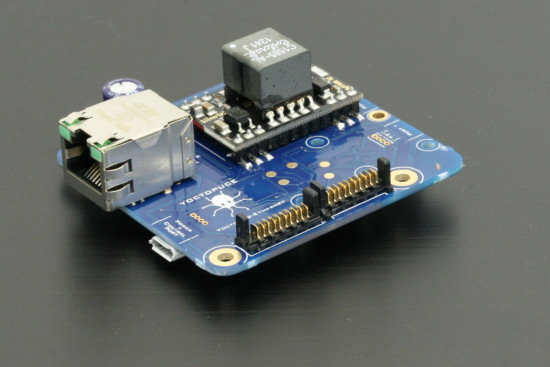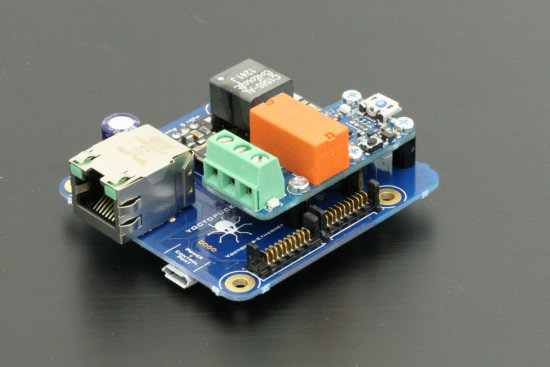![]() Believe it or not, the YoctoHub-Ethernet is available on our on-line shop (yes!). Given the number of mails we have received about it, we assume many people are waiting for it. So let's go for a quick product tour!
Believe it or not, the YoctoHub-Ethernet is available on our on-line shop (yes!). Given the number of mails we have received about it, we assume many people are waiting for it. So let's go for a quick product tour!
To keep it simple: the YoctoHub is equivalent to a VirtualHub running on a little PC, except that it does not require a little PC. One could even say that the YoctoHub-Ethernet is a physical VirtualHub :-) Its size is approximatively 6x6cm, with a height of 2.2cm.

The YoctoHub-Ethernet
On this board we find:
- Three USB micro-B connectors, to connect up to three Yoctopuce devices. In the near future, it will be possible to connect additional devices using one or more YoctoHub-Shield.
- An Ethernet socket to connect to the network. This connector can also bring power to the hub and its devices, when using an appropriate PoE-enabled network switch or injector.
- A micro-USB power and control port, that can power the YoctoHub in a conventional way, using a simple USB charger. This port can also be used to configure the YoctoHub, manually or programmatically.

The hub can host three Yoctopuce devices.
One more thing. It is possible to mount a simple-width Yoctopuce module directly on the hub: this makes a convenient network-enabled Yoctopuce device, in a compact form factor.

One Yoctopuce device can be mounted directly on the hub. On the picture, we used a Yocto-PowerRelay
Usage
As we like to do it, we have designed this device for ease of use: you only have to connect the Yoctopuce modules, the Ethernet cable and the power. That's it, your devices are on-line. You can locate the hub directly in the network neighborhood of your favorite OS, or read its IP address by connecting an USB cable on the control port (using the API or the VirtualHub). Indeed, when connected by USB, the YoctoHub-Ethernet can be controlled like any standard Yoctopuce module.
From a programming standpoint, everything works like if you would use a VirtualHub: simply put the IP address (or network name) from the YoctoHub-Ethernet when calling RegisterHub.
Of course, the YoctoHub-Ethernet can automatically post measures by HTTP on the server of your choice, as the VirtualHub does. Get you Xively graphs ready!
That's the most important part of it. You will find more in the product documentation. Speaking of it, the English documentation is unfortunately not yet ready (translation is still ongoing), but that will come in the near future. In between, you can peek at the Google translation of the French manual.


